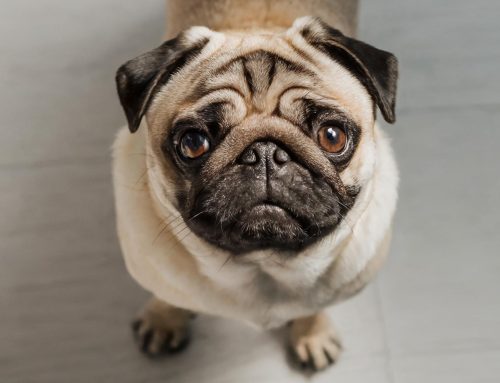Jump To Section
History
Italian Greyhounds have been companions for humans for a long time and throughout history they have been a favorite for many nobilities and royal courts in Europe. The breed originates from somewhere around the Mediterranean area as 2000 year old archeological findings have proven that a small greyhound looking dog existed already then. Besides being a lapdog, the Italian Greyhound may have also been used to hunt small game.
In the Middle Ages the Italian Greyhound had spread around the southern area of Europe while it took until 1800s for the breed to reach the United States. Together with other imports, it was eventually dogs from the US that were able to help bring back the breed in England after it nearly went extinct during the World Wars.
The breed got its name due to being popular in the 16th century Italy and throughout history numerous artists have immortalized these dainty little dogs in their artworks.
In today’s world the Italian Greyhound enjoys his life as a beloved pet and companion in many households.
Appearance
The Italian Greyhound is a small dog weighing only 5kg (11lb) at most. They are 32-38cm (13-15″) at the shoulder. Out of all the sighthounds, The Italian Greyhound is the smallest. They have a long neck and medium size eyes that sit in their narrow head. The Italian Greyhound’s back arches slightly giving it a curved look. The dog is an elegant looking sighthound with a light gait when it moves.
The single coat of an Italian Greyhound is silky, short and glossy. Common coat colors include black, blue, cream, fawn, gray, red and white*. White markings are accepted, but brindle and tan markings are not.
*FCI breed standard tolerates white only on the chest and paws.

Photo by: Alina Skazka
Temperament
Italian Greyhounds are intelligent, alert, adaptable, gentle, playful and sensitive dogs. They are dogs that bond strongly with their owners and make for doting companions.
With strangers Italian Greyhounds are said to be friendly though some individuals can be reserved. Italian Greyhounds often get along well with children and other household pets. However, to avoid injuries, one must practice caution around these fragile dogs.
The breed is suitable for living both in the city and in the countryside.
To keep an Italian Greyhound interested in training, it is suggested to keep the sessions short. Training should also be positive reinforcement type training which means that the dog is rewarded with praises and treats.
The Italian Greyhound is sensitive to cold, so proper action must be taken to protect him from cool weather conditions should there be any. It is not uncommon for an Italian Greyhound to seek warm places indoors either to keep warm.
Potty training an Italian Greyhound may turn out to be more challenging than with some other breeds, so patience from the owner is required. It is often said that it can take longer time for small dogs to be potty trained than what it does for bigger dogs.
Being a sighthound, many Italian Greyhounds have high prey drive and thus they may chase squirrels and other small animals. Due to this trait, it is best to only let an Italian Greyhound off lead in a safe and fenced area.
Health
The average life expectancy for an Italian Greyhound is 12-15 years.
Health concerns to be aware of within the Italian Greyhound dog breed include:
- Autoimmune disease
- Canine cataract
- Color dilution alopecia (CDA)
- Epilepsy
- Hypothyroidism
- Legg-Calve-Perthes disease
- Patellar luxation
- Periodontal disease
- Portacaval shunt
- Progressive retinal atrophy (PRA)
Additional info:
- The breed can be sensitive to barbiturate anesthesia.
- Leg and tail fractures can happen easily, especially when the dog is young.
- Italian Greyhounds are prone to periodontal disease, so proper dental care is important.

Photo by: Brian Taylor on Unsplash
Care, Exercise And Grooming
The soft and short hair of the Italian Greyhound does not shed much. Only occasional brushing and bathing is required. Wiping down with a soft wet cloth is often enough. Some sources say that the Italian Greyhound is an odorless breed.
Generally Italian Greyhounds are active dogs that enjoy exercise despite their small size. Italian Greyhounds require daily walks, they appreciate playtime and getting to run free off lead in a fenced area. Lure coursing is an activity that some sighthound owners might enjoy together with their dogs.
All dogs, including The Italian Greyhound, require basic dog health and wellness care. Every dog needs to be provided with proper dental care, nail care, ear and eye care as well as regular checkups at the vet for vaccinations and other health related matters.
Just like any dog, also the Italian Greyhound needs proper socialization and training. When raised properly, the Italian Greyhound makes a devoted pet for many.
References
1. American Kennel Club. The Complete Dog Book (p. 852). Random House Publishing Group. Kindle Edition.
eISBN : 978-0-307-41699-5
2. Coile Ph.D., Caroline. Encyclopedia of Dog Breeds (p. 3). Sourcebooks. Kindle Edition.
eISBN: 978-1-4380-6792-6
3. TFH Editors. Encyclopedia of Dog Breeds (Pocket Professional Guide®) . TFH Publications. Kindle Edition.
ISBN: 978-0-7938-4482-1 (eBook)
4. Standard-Italiensk-Vinthund-FCI200.pdf, Svenska Kennelklubben website, <https://www.skk.se/globalassets/dokument/rasstandarder/standard-italiensk-vinthund-fci200.pdf>.






